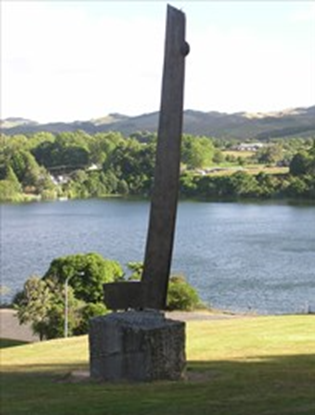
Te Ihingarangi – Part 4
-
1600
Ko Ngāti Raukawa
Te Ihingarangi, grandson of Raukawa and Turongo, and son of Rereahu and Rangianewa, built a home above the Waikato River at Karapiro (now known as Te Tiki o Te Ihingarangi). He had moved his people to this area of the Waikato after a dispute with his younger half-brother Maniapoto. Te Ihingarangi had originally lived at Ongarahu in the Waipa Valley, south east of Otorohanga. Just before his death Rereahu passed his mana and leadership to Maniapoto. Adding injury to insult, Maniapoto attacked Te Ihingarangi. After several of his warriors were killed Te Ihingarangi accepted defeat and moved his people to Maungatautari.1
There, Te Ihingarangi married Ringa-ariari and they had a son named Te Kuri. Te Ihingarangi, in later life, returned to Waipa. But Te Kuri remained in the Maungatautari area and married Whakamaungarangi, a descendent of Uenukuwhangai and of the Ngāti Kauwhata hapu. Te Ihingarangi’s people came to be known as Ngāti Raukawa and lived on the northern slopes of Maungatautari, spreading north through Karapiro and down the Waikato River towards Kirikiriroa.
The Maungatautati/Karapiro area grew in importance. Strategically it was a good defensive position. Hill top pa like Te Tiki o Te Ihingarangi commanded views of the Waikato basin. The area was also rich in food resources. Birds, especially kereru, and berries, especially tawa, taraire and hinau, were plentiful in the forests2. The swampy lowlands and the river provided flax, waterfowl and eels.
Also during this period Koroki came to prominence. He was directly descended from both Uenukuwhangai and Te Ihingarangi. Koroki “lived on the south side of the Waikato River near Cambridge.” 3 Taowhakairo, a Ngāti Kauwhata cousin of Koroki, lived on the northern bank of the river.
“When Taowhakairo found Koroki visiting his wife in his absence, he vowed to cook Koroki and eat him, an insult that could not be allowed to pass… Koroki called on his Waikato cousins for help and together they attacked and defeated Ngāti Kauwhata.”3
Koroki married two sisters, Kahurere and Tumataura, who were granddaughters of Tama-inu-po from Whatawhata. Tumataura and Koroki had two sons, Hape and Haua. Ngāti Koroki are descended through Hape, and Ngāti Haua through Haua. From Wairere, Kahurere and Tumataura’s father, Ngāti Wairere, are descended.
1F L Phillips, Nga Tohu a Tainui: Landmarks of Tainui (Otorohanga 1989), p30
2Richard Cassells, “Human Ecology in the Prehistoric Waikato”, Journal of the Polynesian Society Vol 81 (1972) p232
3J B W Roberton, Maori Settlement of the Waikato District (Te Awamutu 1965) p25
Published in the Cambridge Historical Society Newsletter April 2021
